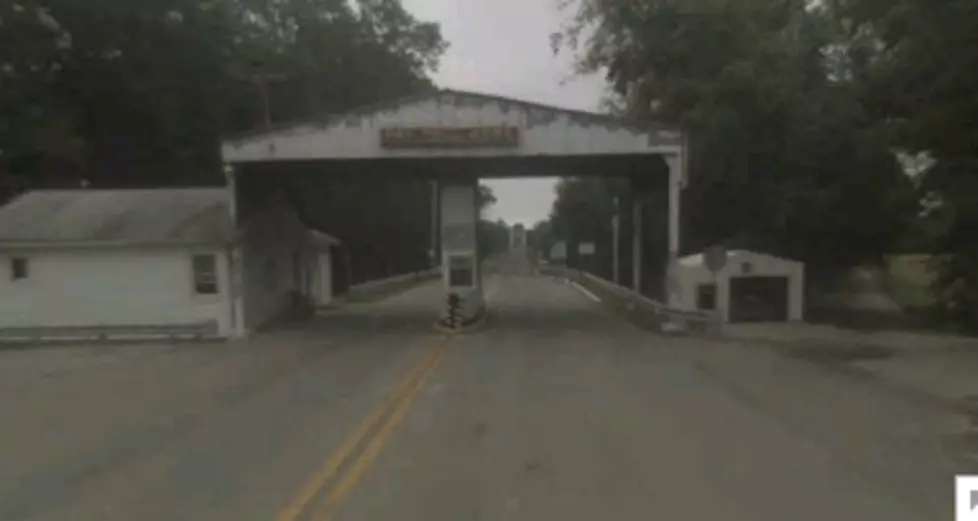
Troubled Bridge over Wabash Waters – Officials Scramble to Save Crumbling New Harmony Span
By Jay Zimmer
(New Harmony) It had to happen, and now that it has, officials can do little more than stare at the bridge and shake their heads. Commissioners had known for years that the bridge was crumbling, but the decay has now reached a point where standing and staring is no longer an option. As of the moment, “Road Closed” signs deter traffic on either side of the river, and the toll-takers have been furloughed.
Now what?
Among the many problems faced by the bridge and the people who use it is that the span is not a public entity. Congress chartered the building of the bridge 82 years ago. It opened December 21, 1930. In 1941, Congress deeded the structure to a three-member commission also created by Congress.
In 1998, Congress shot itself in the collective foot – at least as far as the bridge was concerned – by repealing the law that created the bridge commission while leaving that three-person body intact. Thus, the present commissioners can’t resign – there’s no one to submit a resignation to – and if they die they can’t be replaced. And in the event they do pass on, the ownership of the bridge is, to say the very least, murky
The bridge derives its income, which pays the salaries of the commissioners, and a modicum of maintenance, from tolls. But those tolls can’t even make a dent in the cost of making the bridge safe. Recent engineering reports indicated problems with the support structures on the four-span bridge make safety of the narrow structure doubtful. Repairs are estimated to cost about $6 million. At this point, the bridge takes in about $30,000 a month in tolls and has about $22,000 in expenses. Commission president Jim Clark, whose order closed the bridge May 21, said the repair costs were “more than we could imagine.”
Neither the Indiana nor Illinois departments of transportation want the bridge; both say the 900-or-so cars that cross every day aren’t enough to make it a viable asset to either state’s road system.
The bridge closure works against the economies of White County Illinois and Posey County Indiana, whose farm and oilfield service companies make good use of the narrow structure. The nearest bridge that can take such travelers over the Wabash in the I-64 bridge, ten miles away, a distance that gives fire departments and ambulance crews pause.
Now, though, discussions are under way to abolish the three-member bridge commission and turn the tumble-down structure over to a new bi-state commission, in effect turning the private bridge into a public entity. That will make the bridge eligible for grants and other funds from the federal government and the two states – funds that could pay for repair or replacement of the octogenarian structure. Indiana and Illinois would each appoint three members to the new commission, and local governments would figure out where repair money will come from.
In the main, the chances of such a new commission materializing aren’t promising, but at the moment it’s the best shot the old structure – and its users – have.
More From WGBFAM


![New Orleans Hornets Win NBA Draft Lottery — Who Will They Take with Top Pick? [VIDEO]](http://townsquare.media/site/75/files/2012/05/hornets.jpg?w=980&q=75)






